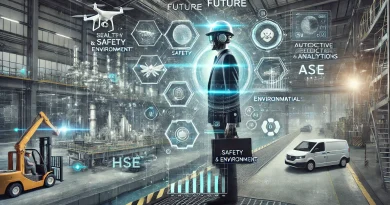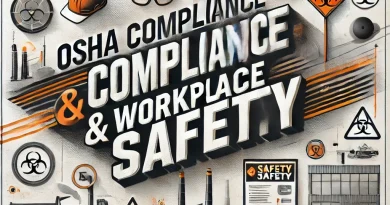Top 10 Oil & Gas Industry Accidents

1. Piper Alpha Disaster
Location: North Sea, United Kingdom
Date: July 6, 1988
Overview
The Piper Alpha disaster is considered the deadliest offshore oil accident in history. A gas leak ignited a massive explosion, followed by catastrophic fires. The disaster resulted in the loss of 167 lives and billions of dollars in damages.
Key Causes
- Lax safety protocols.
- Inadequate risk management.
- Poor emergency response measures.
Impact and Lessons
The tragedy highlighted the critical need for stringent safety regulations, improved platform designs, and robust evacuation procedures in offshore operations.
2. Deepwater Horizon Oil Spill
Location: Gulf of Mexico, USA
Date: April 20, 2010
Overview
The Deepwater Horizon drilling rig exploded, causing one of the largest oil spills in history. An estimated 134 million gallons of oil were released into the Gulf of Mexico.
Major Causes
- Failure of the blowout preventer.
- Poor decision-making and inadequate risk assessments.
Impact and Lessons
The spill caused extensive environmental damage and cost BP billions in fines and settlements. It reinforced the importance of maintaining critical safety equipment and adhering to stringent environmental safeguards.
3. Exxon Valdez Oil Spill
Location: Prince William Sound, Alaska, USA
Date: March 24, 1989
Overview
The Exxon Valdez oil tanker struck Bligh Reef, spilling over 11 million gallons of crude oil and contaminating approximately 3,000 square miles of ocean.
Key Causes
- Human error by the tanker crew.
- Inadequate spill response plans.
Impact and Lessons
The incident led to significant improvements in tanker safety practices, including double-hulled designs and stricter maritime regulations.
4. San Juanico Disaster
Location: San Juanico, Mexico
Date: November 19, 1984
Overview
A catastrophic explosion at an LPG storage facility killed hundreds and injured thousands, making it one of the deadliest industrial accidents in Mexico’s history.
Key Causes
- Poor condition of storage tanks.
- Proximity to residential areas.
Impact and Lessons
This tragedy emphasized the importance of properly maintained storage tanks and strict zoning regulations to prevent industrial facilities from being located near populated areas.
5. Texas City Refinery Explosion
Location: Texas City, Texas, USA
Date: March 23, 2005
Overview
A BP refinery explosion killed 15 workers and injured over 100. The explosion was caused by the ignition of a hydrocarbon vapor cloud.
Key Causes
- Over-pressurized equipment.
- Insufficient investment in safety upgrades.
Impact and Lessons
The incident prompted sweeping changes in refinery safety standards, corporate accountability, and stricter adherence to operational protocols.
6. Moura Mine Disaster
Location: Moura, Queensland, Australia
Date: August 7, 1994
Overview
An underground coal mine explosion claimed the lives of 11 miners. Methane gas buildup was identified as the primary cause.
Key Causes
- Methane gas accumulation.
- Poor ventilation systems.
Impact and Lessons
The disaster led to stricter ventilation standards and advancements in gas monitoring technologies.
7. Chevron Kern County Spill
Location: Kern County, California, USA
Date: 2019
Overview
A spill from Chevron’s facility released over 800,000 gallons of oil and water, raising environmental concerns.
Key Causes
- Aging infrastructure.
- Poor maintenance practices.
Impact and Lessons
This spill underscored the need for vigilant infrastructure monitoring and investments in environmentally responsible practices.
8. Kaohsiung Gas Explosions
Location: Kaohsiung, Taiwan
Date: July 31, 2014
Overview
A series of gas pipeline explosions in an urban area caused extensive damage, killing and injuring many residents.
Key Causes
- Undetected pipeline leaks.
- Poor urban pipeline placement.
Impact and Lessons
The incident prompted greater scrutiny of urban gas pipeline networks and the implementation of regular maintenance schedules.
9. Norco Refinery Explosion
Location: Norco, Louisiana, USA
Date: May 5, 1988
Overview
A pipeline rupture at the Norco refinery led to an explosion, killing 7 and injuring 42.
Major Causes
- Corroded machinery.
- Inadequate safety inspections.
Impact and Lessons
This disaster emphasized the necessity of rigorous inspection protocols and proactive maintenance measures.
10. Jesse Pipeline Explosion
Location: Jesse, Niger Delta, Nigeria
Date: October 17, 1998
A pipeline explosion in the Niger Delta
Overview
killed approximately 1,200 villagers, many of whom were scavenging gasoline.
Main Causes
- Pipeline vandalism and insecurity.
- Ignition of leaked gasoline.
Impact and Lessons
This tragedy highlighted the dangers of vandalism and the need for community education and secure pipeline infrastructure.
What was the worst oil industry disaster in terms of death toll?
The Piper Alpha disaster, which claimed 167 lives in 1988, is the deadliest.
What caused the Deepwater Horizon oil spill?
Equipment failure in the blowout preventer and poor risk management led to the disaster.
How did the Exxon Valdez oil spill change maritime regulations?
It resulted in stricter safety protocols and the adoption of double-hulled tankers.
What are the common causes of oil industry accidents?
Common causes include equipment failure, human error, lack of safety protocols, and inadequate maintenance.
How can pipeline explosions be prevented?
Regular maintenance, enhanced security measures, and community awareness are key to prevention.
What lessons can we learn from these disasters?
Investing in safety standards, modernizing infrastructure, and adhering to strict regulations are critical.



